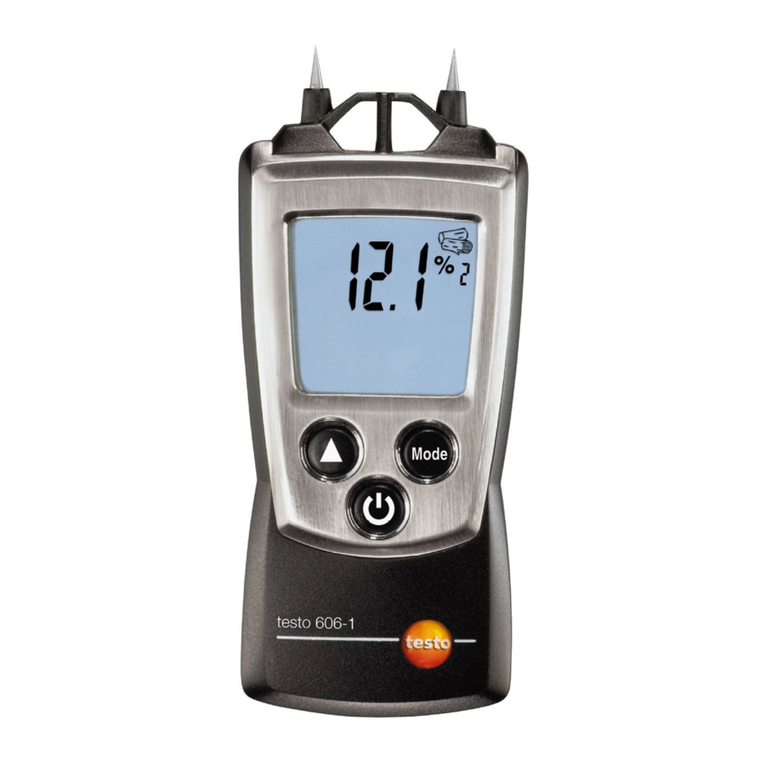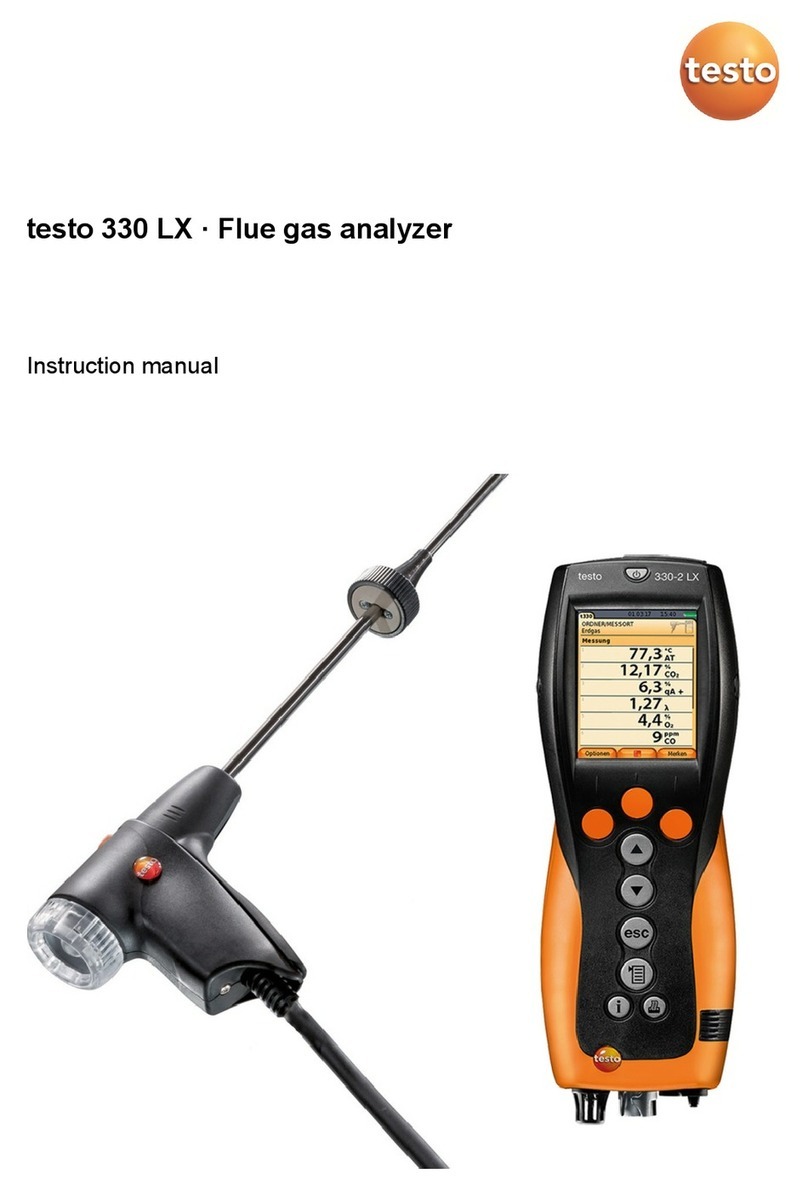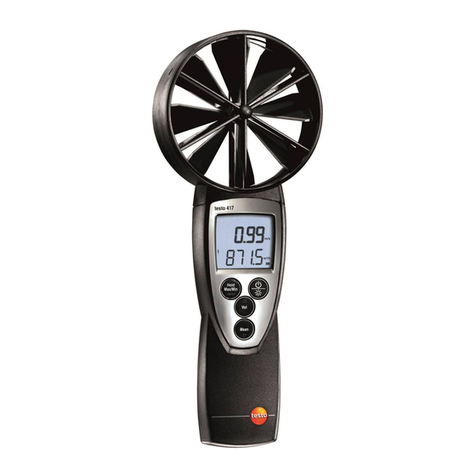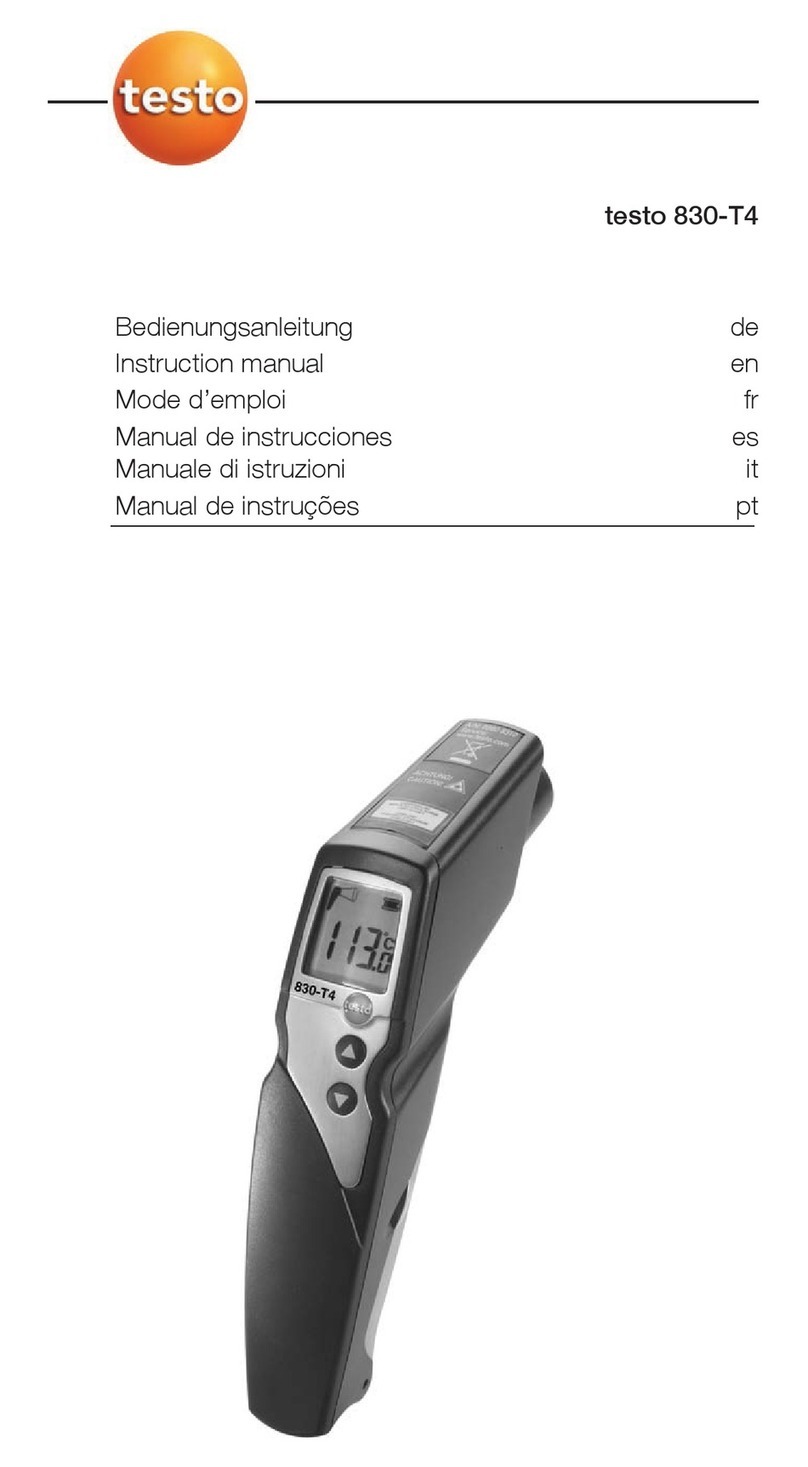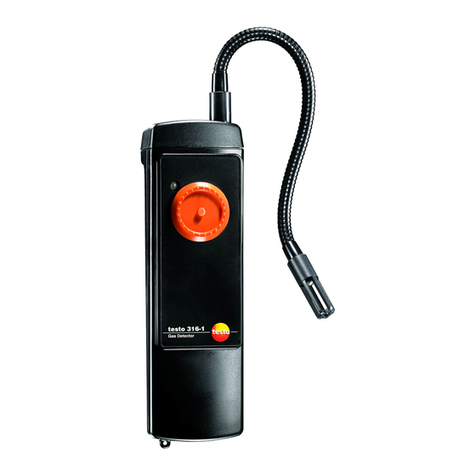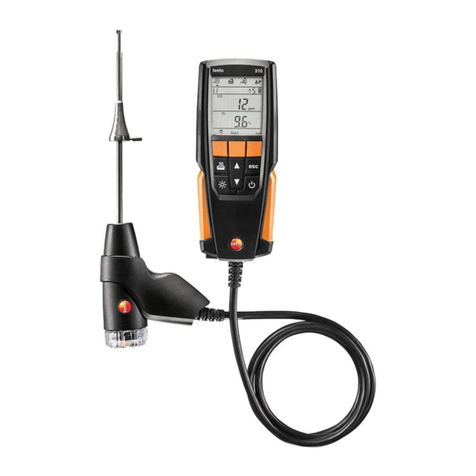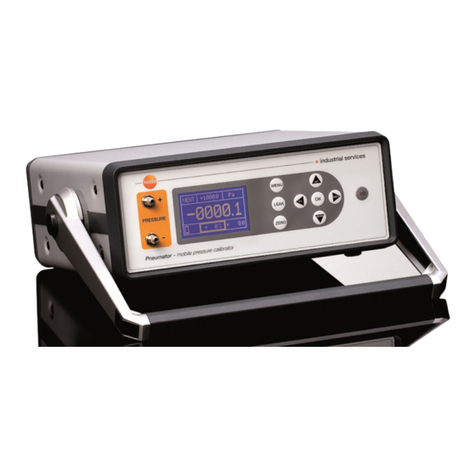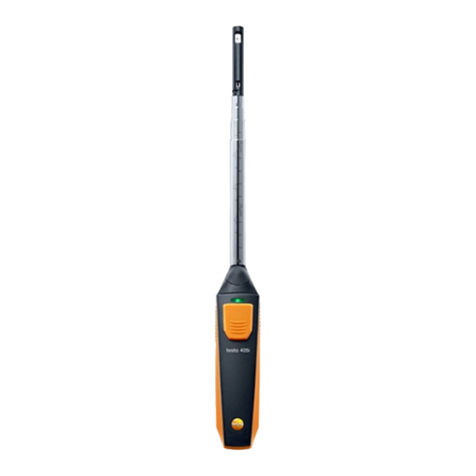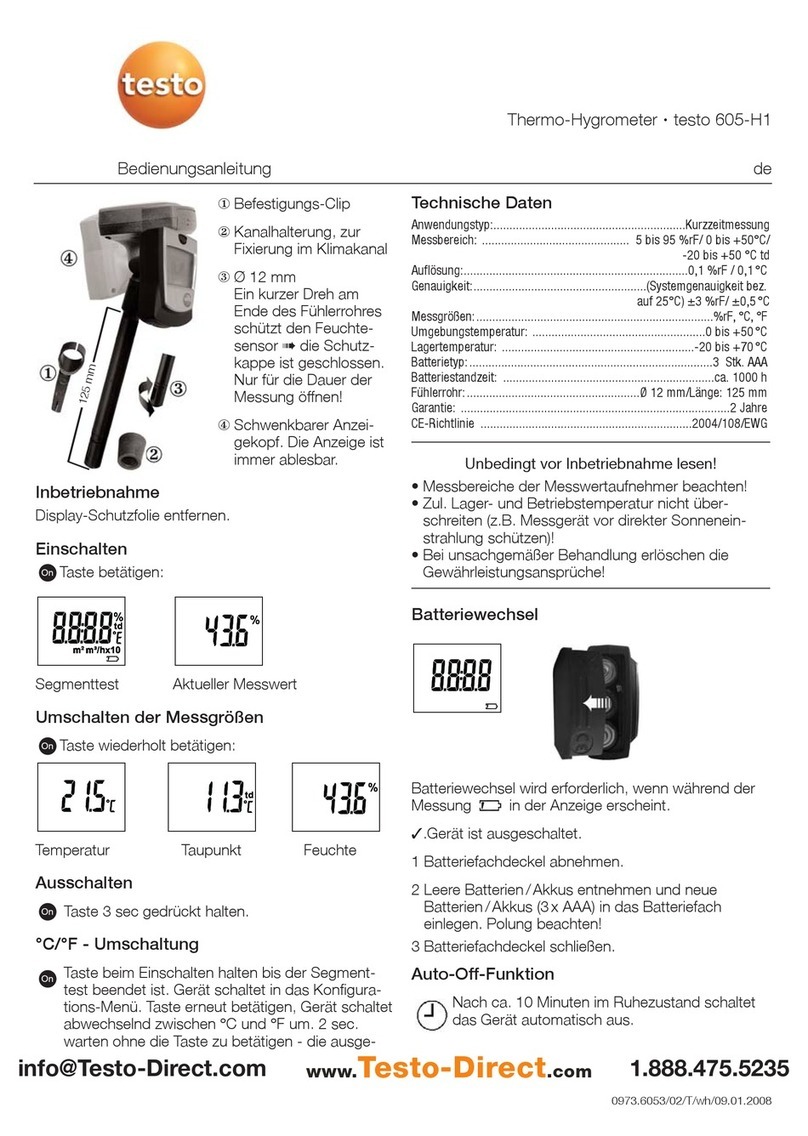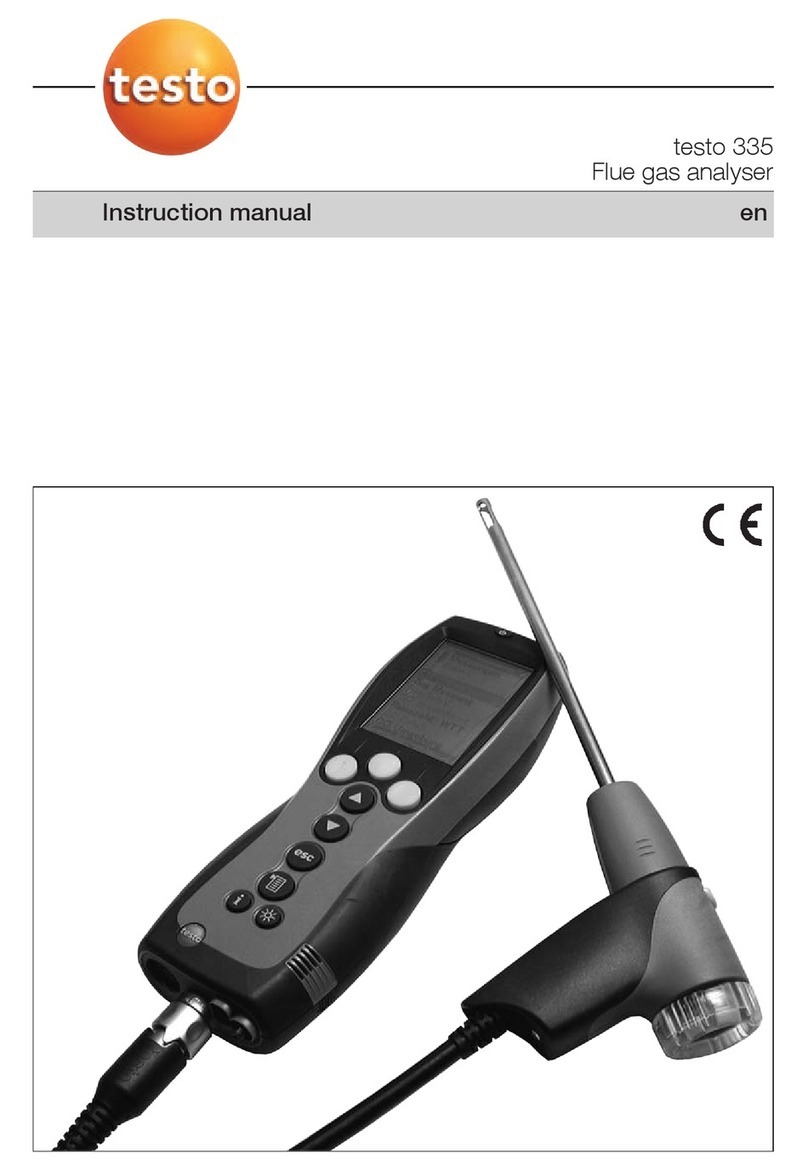
testo 316 - 1
Instruction manual
Monitoring instrument to detect gas leaks.
The testo 316-1 detects even the smallest leaks of combustible gases in pipelines, flanges and screw
connections etc. The bendable probe stem has no problem reaching even inaccessible points. Its wide
range of applications makes the gas leak monitoring instrument indispensable for every professional.
Do not measure on live parts.
This Instrument is not designed to operate while wet or in an environment of
condensing humidity (> 95 %RH).
Observe maximum storage and transport temperature and maximum operation temperature
(e.g. protect measuring instrument from direct sunlight)!
Do not use testo 316-1 in enclosed rooms where gases have gathered to form an explosive mixture.
Ensure that the gas concentration does not exceed the lower explosion limit of gas mixtures by 20%.
The alarm limits are adjusted downward when the sensitivity is set in a gas environment.
Always carry out a function test prior to gas leak detection.
Set sensitivity of sensor in fresh air.
Warranty no longer applies in the case of inexpert handling or if force is used.
Switching on
- Turn control button
- Warm-up phase of sensor begins
- LED is red
- Alarm signal sounds
- Warm-up phase max 30 seconds
- LED is green
- Alarm signal off
Ready to operate
- No alarm signal
- LED is green
Setting sensitivity in fresh air
- Turn control button to the right until the sound
signal is heard
- Turn the control button to the left until the
sound signal stops.
Detecting leaks
- Sound signal when gas is escaping
- Signal becomes quicker as concentration increa-
ses
- Alarm > 200 - 10000 ppm
- LED changes from green to yellow
- Warning sound
- Alarm > 10000 ppm
- LED changes from yellow to red
- Warning sound
Function test
- Charge the sensor with a low concentrated gas
(max. 10 sec.) or breathe on the sensor..
- If the sensor does not react (no alarm), the
instrument should be considered as defective
and must not be used. Return the unit imme-
diatly to the nearest Test service point for repair.
Green LED
Switching on
Ready to operate
Setting sensitivity
Measuring
Changement de pile
Caractéristiques techniques
Certificat d’ajustage/ Justage certificate
Etendue de mes.: 0...10.000 ppm (1 Vol%) CH4
1. Alarmes: > 200 ppm LED jaune
2. Alarmes: > 10.000 ppm LED rouge
Autonomie pile: > 5 h avec pile alcaline IEC 6LR61
Temp. d’utilisation: 4...45 °C
Temp. de stockage et de transport: -20...+50 °C
Dimensions: 90 x 57 x 42 mm
Poids: env. 300 g
Garantie Détecteur de fuites: 24 mois
Garantie Capteur: 12 mois
Numérode série Signal visuel ook
Serial no. Optical emitter
Signal sonore ook
Accustic emitter
Réglage des seuils d’alarmes
Setting alarm thresholds
Valeur de référence/Reference Valeur de test à/Tested at
Alarm 1 200 ppm ________ ppm ook
Alarm 2 8800 ppm ________ ppm ook
Désignation Références
testo 316-1, détecteur de gaz et de surveillance avec pile et mode d’emploi 0632.0316
Etui de transport 0516.0182
TopSafe, étui de protection inusable avec support de table 0516.0189
Mallette de transport PVC, pour protection du matériel 0516.3120
Signal pile faible Signal
- Signal sonore toutes les secondes.
- Changer la pile dans les 15 minutes
- Dévisser la vis de fixation (au dos de l’appareil).
- Remplacer la pile usagée par une pile 9 V neuve. Respecter la polarité!
- Refermer le boîtier.
Elimination des déchets : les piles usagées doivent être jetées dans les lieux de collecte prévus à cet
effet.. Pour éviter les circuits courts, les piles doivent être jetées individuellement dans un sac plastique!
Appareil de mesure con-
forme:
EN 50 082 partie 1
EN 50 081 partie 1


















